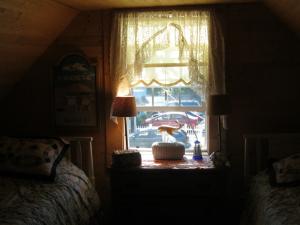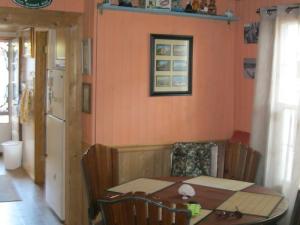Daneen Corbin: Preserving a piece of Rehoboth history
Tourists in Rehoboth Beach often get a bad rap, and yet, it was a tourist who has helped preserve an enduring link to the city’s origin as a religious retreat.
Thirty-eight years ago, Univerity of Akron senior Daneen Corbin visited Rehoboth from her town of Rootstown Township, Ohio. Nearly nine hours from home, Rehoboth was the closest sandy beach.
Arriving in a Volkswagon van, Corbin saw a little house at 57 ½ Baltimore Ave. for sale and was curious about having a vacation house in Rehoboth.
The house was all white on the outside, she said, and the interior was turquiose with black ball fringe on the curtains and lampshades.
“It was like a whorehouse actually, when I walked in here,” Corbin joked. She said she was told the previous owners’ children were artists who used the house as a personal project.
Corbin was young at the time, on summer break from her job as a student-teacher. The house was selling for $42,000; Corbin offered $38,000, but was outbid. As it turned out, the winning bidder was not able to get financing. Corbin said the real estate agent offered to accept her $38,000 bid, and like that, Corbin had her house.
What she had purchased was an old tent house, homes built in the days when Rehoboth was home to Methodist camp meetings. Corbin’s house is believed to have been built in the 1890s, a fact noted on a plaque placed on the house by the Rehoboth Beach Historical Society
Former planning commissioner Tim Spies researched the tent houses during his time on the board of the historical society. Tent houses typically had an open porch, a shingled exterior and used beachboard or pine exterior paneling. Spies said he is not sure where the name tent house came from, but the houses were used as a temporary summer residence for camp meetings.
“They were little wooden boxes,” he said. Spies said the houses were not built for permanence, but as temporary, cheap and basic shelter. Of the four tent houses remaining in the city, he said the Corbin house is the only one of the tent houses still primarily used as a residence and other than the Anna Hazzard Museum, the Corbin house is the least altered of the remaining tent houses.
Corbin was aware of the historic nature of the house when it was first shown to her and has been a factor in her decision to keep it.
“I love the historical value,” Corbin said. “That for me is so cool. I love old things. That’s a real big part of it for me.”
The house still reflects the time it was built. It is small: the upstairs bedrooms can be somewhat treacherous for anyone more than 6-feet tall, with low-hanging ceilings. There are two bedrooms upstairs, a common feature of tent houses, a main downstairs room that serves as both a living room and an extra bedroom and a dining room.
Since she bought it, the only real changes Corbin has made were new windows, remodeling the kitchen, which itself was an addition to the house, and rewalling the upstairs bedrooms. She also installed a bathroom in the kitchen addition.
Corbin said most of the floors are original and even some of the furniture is original from when she bought it. There is no central heat or air; in the summer months, the house is cooled by room air conditioners and opening windows.
“It’s a cute little place,” Corbin said. “It’s cozy and its fun to be here.”
Corbin, who has no children of her own, mainly hosts family members. During the humid weekend of Oct. 5, Corbin came down with her sister and her niece, Angela.
During the summer months, life at the house can get interesting, since it sits between Aqua Grill and Mark Showell Interiors on the busy second block of Baltimore Avenue. Corbin said the business owners are very respectful of her privacy and make an effort to keep the noise down and keep the area clean.
When she bought the house, Corbin said, the block was still mostly residential, but as that has changed, she has taken the approach of just trying to enjoy her time in Rehoboth.
“I just decided, I’m either just going to enjoy this or I’m going to sell the place, and I never wanted to sell the place,” she said.
Corbin has refused to sell, despite the incredible growth of Rehoboth property values since she purchased the house.
“I’ve been offered $1 million,” she said. “I don’t really care how much. If I had to have the money or if I knew I was never going to get to come back here again, yeah that would be awesome.”
Now retired after 30 years as a teacher, Corbin and her family, along with her feisty dog, Rudi, still come to Rehoboth six to 10 times per year. Corbin said she has already decided to pass on the house to her niece, Angela.
“Of all the family members, she’s the one that has shown the most interest, so she’s definitely getting it,” she said.
Corbin said she loves the shops and restaurants and Rehoboth, but the big draw is still going to the sandy beach that first brought her.
“It is very inviting to come here,” she said.





















































